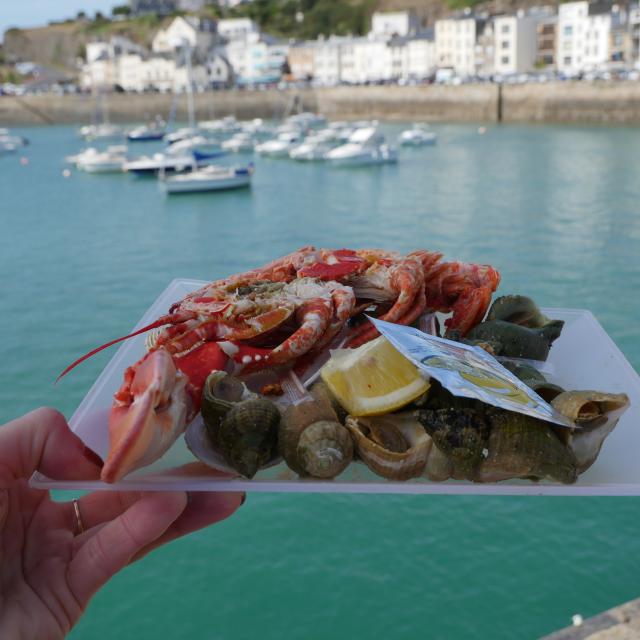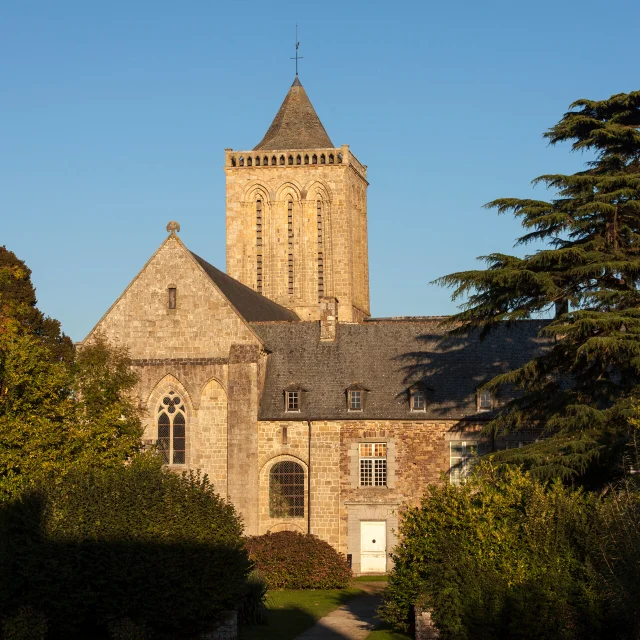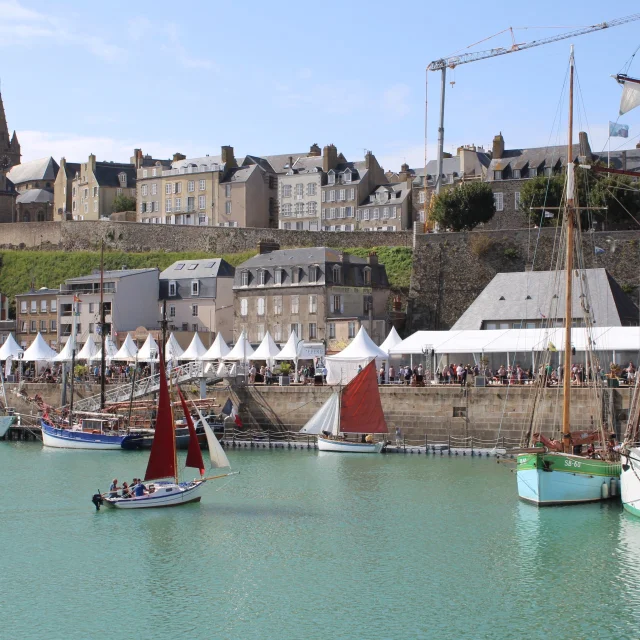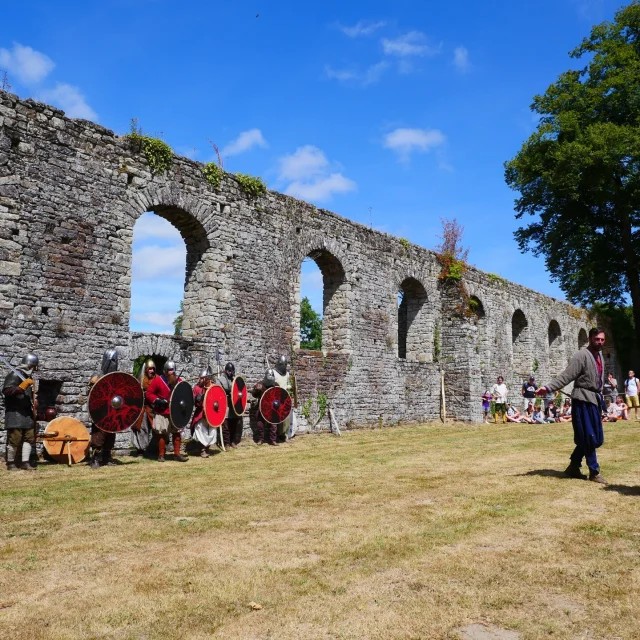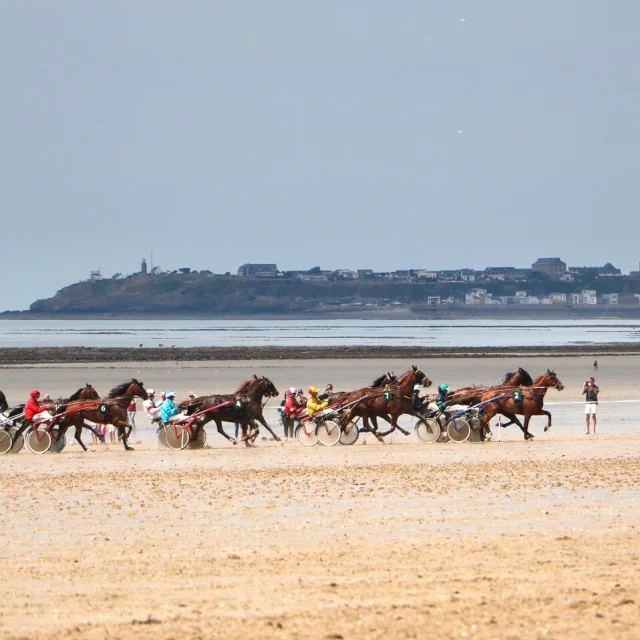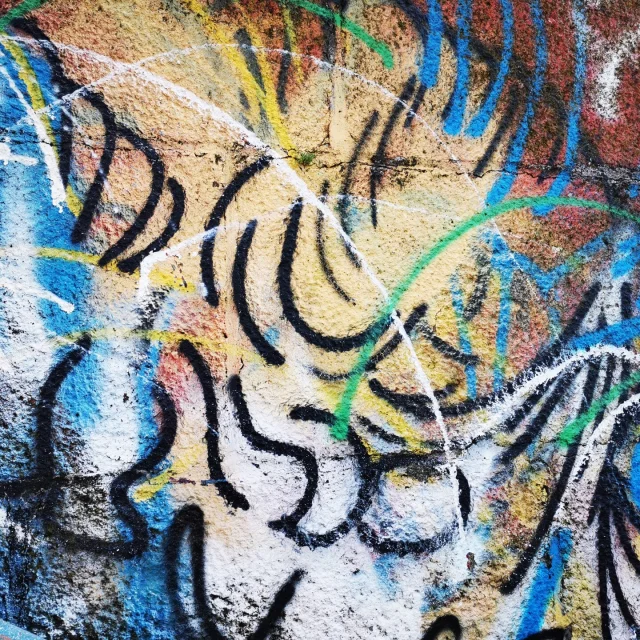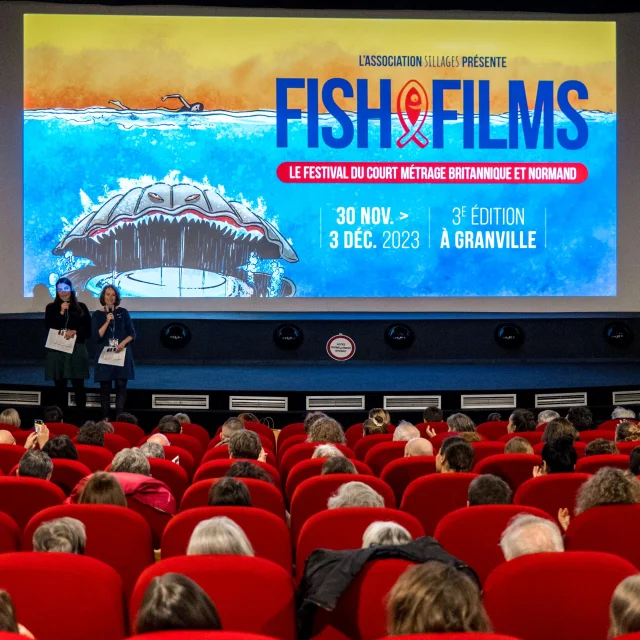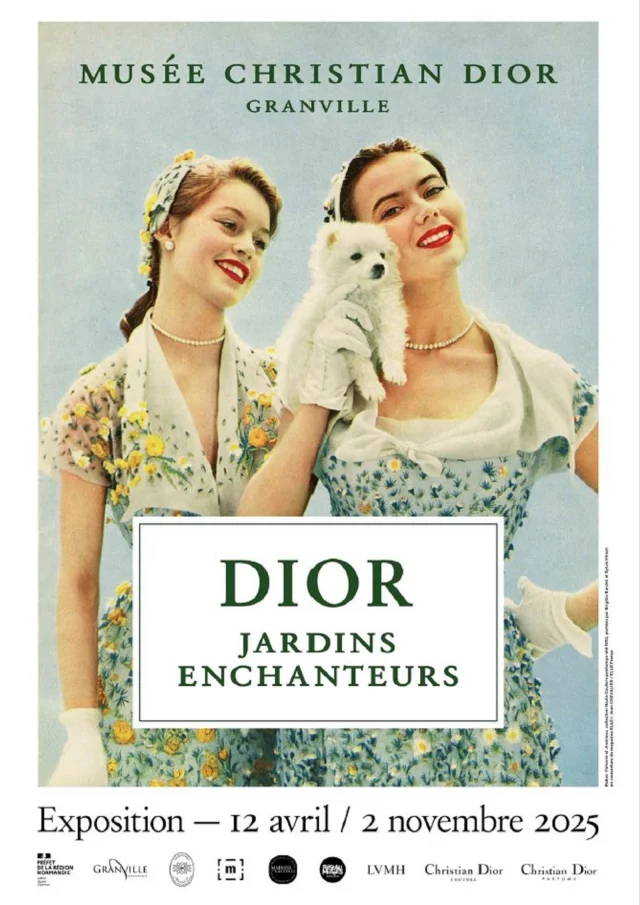 Dior Jardins Enchanteurs exhibition
Dior Jardins Enchanteurs exhibition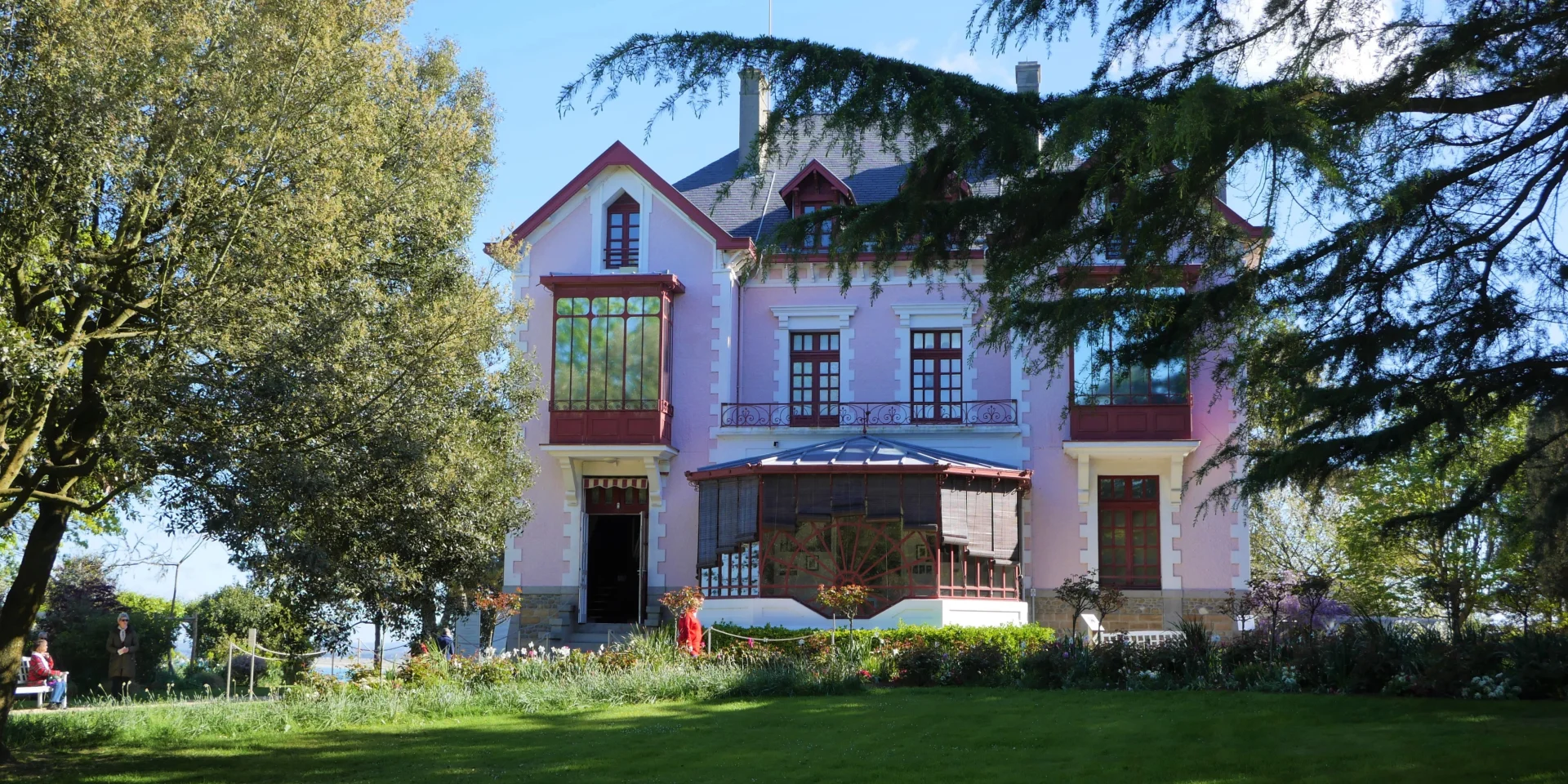 2025 04 Expo Dior E 85
2025 04 Expo Dior E 85Dior, Enchanted Gardens
Christian Dior Museum - Granville Dior Jardins Enchanteurs exhibition
Dior Jardins Enchanteurs exhibitionExhibition
from 12 April to 2 November 2025More than twenty years after Dior côté jardins », the Christian Dior museum in Granville is delving back into the véuniverse of the célèbre couturier with its new exhibition « Dior, Jardins Enchanteurs »;The museum’s new exhibition, Dior, Jardins Enchanteurs, runs until 2 November 2025. A poetic immersion in the influence of gardens on fashion, perfumes and the house of Dior’âme même.
A floral tribute to Christian Dior’s roots
In his childhood home nestled in the heights of Granville, the villa Les Rhumbs, Christian Dior very much covered the beauty of flowers, shapes and fragrances. This intimate link with nature permeates all his creative work, from his first collections to the house’s emblematic fragrances.
When gardens inspire today’s talent
Today, Dior’s artistic directors still perpetuate this floral heritage.
Christian DIOR
Apprentice gardenerWhen the Dior family decided to settle in Paris in 1911, Christian Dior was marked by the perfume of women, such as that of a strange marquise who haunted his parents’ private home in Paris;his parents’ private home in Paris, and the enduring scents of women portrayed by painters such as Giovanni Boldini, Antonio de La Gandara and Henry Caro-Delvaille. Wasn’t the future couturier’s senses stimulated in the Granville garden, where the fragrance of flowers and the smell of sea spray mingled? The models in the autumn-winter 2010 collection, a veritable garden of fashion, recall the floral inspiration originally drawn from Granville and cultivated by the successive artistic directors of Dior. A few decades later, Christian Dior named two dresses from the spring/early summer 1952 collection after Vilmorin and Andrieux, a reminder of what he had read as a child, the catalogues of the Parisian seed merchant that he thought were those of any other novel. These two models, now extremely rare, embroidered with pearls and gold buttons, are brought together for the first time in an exhibition thanks to the exceptional loan of a private collector.
Miss Dior
Miss Dior, created dès 1947 by Paul Vacher, is first and foremost a family and friendship story that associates Serge Heftler-Louiche, Granville’s friend and founding president of Christian Dior Parfums, and Catherine Dior, Christian Dior’s dear sister. The Miss Dior fragrance brings together a repertoire of shapes and motifs such as the houndstooth, that of the model Cocotte (spring-early; 1948), the Fontanges knot, a regular ornament on the perfume counters, and the Louis XVI-style maillon, which have become distinctive codes for the House of Dior. The swan, chosen for its elegance and symbolism, is the original image of Miss Dior created by the illustrator René Gruau, who created his first advertising visual. Originally a fragrance, Miss Dior became a line, a name for models, including the dress that Maria Grazia Chiuri designed in 2021 for the <rsquo;actress Natalie Portman, General Manager of Parfums Christian Dior, presented majestically in Catherine Dior’s childhood bedroom.
The Christian Dior Museum,
museum and place of remembranceAs the first museum to be entirely dedicated to a fashion designer in France, the Christian Dior Museum has a very special history. Located in the designer’s childhood home, it owes its existence to the infatuation caused by the exhibition Christian Dior, the Other Himself;The exhibition was held at the Granville Museum of Modern Art in 1987 to mark the fortieth anniversary of the fashion house. The enthusiasm of the visitors aroused the desire of former collaborators and those close to Christian Dior to build up a collection that has continued to grow ever since;has been constantly enriched, studied and presented to the public in temporary exhibitions ever since. Brigitte Richart, curator of the Musée Christian Dior and curator of the exhibition.
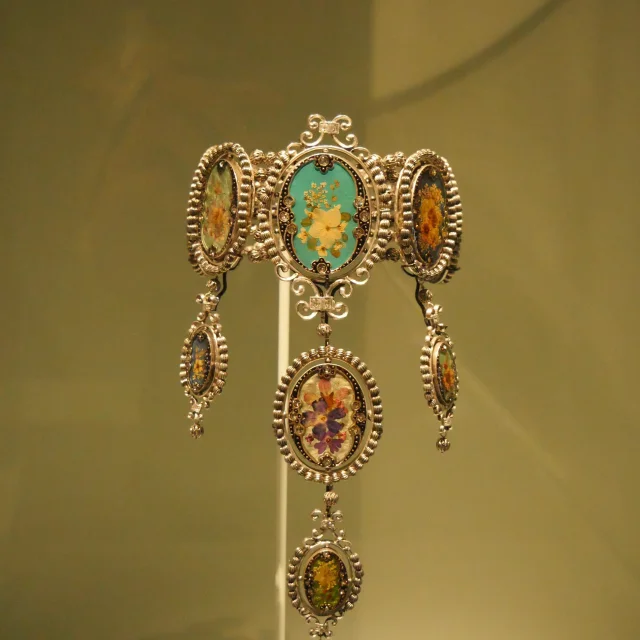 2025 04 Expo Dior Estelle Cohier 3 Rotated
2025 04 Expo Dior Estelle Cohier 3 Rotated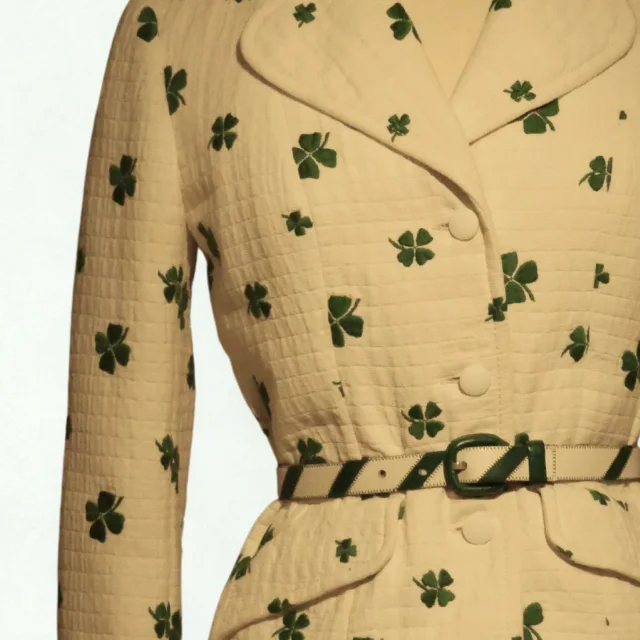 2025 04 Expo Dior Estelle Cohier 3
2025 04 Expo Dior Estelle Cohier 3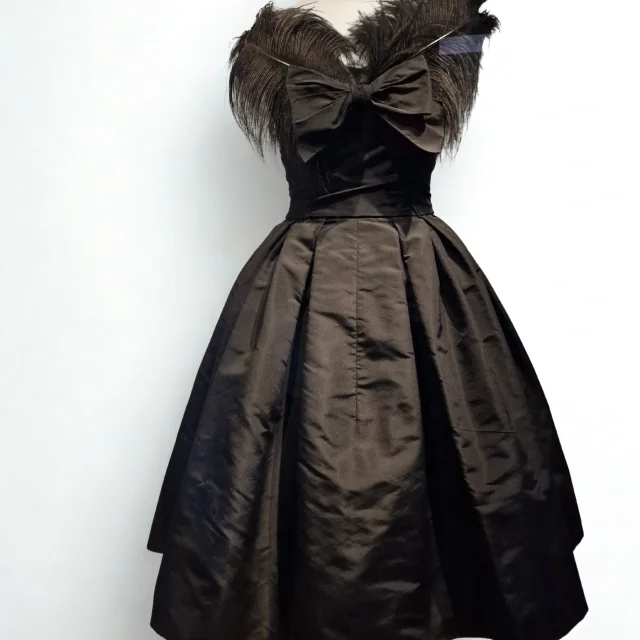 2025 04 Expo Dior Estelle Cohier 6
2025 04 Expo Dior Estelle Cohier 6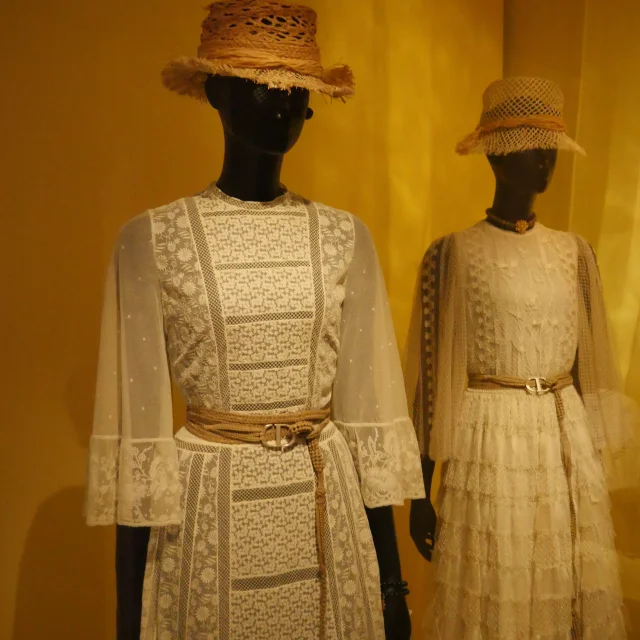 2025 04 Expo Dior Estelle Cohier 8 Rotated
2025 04 Expo Dior Estelle Cohier 8 Rotated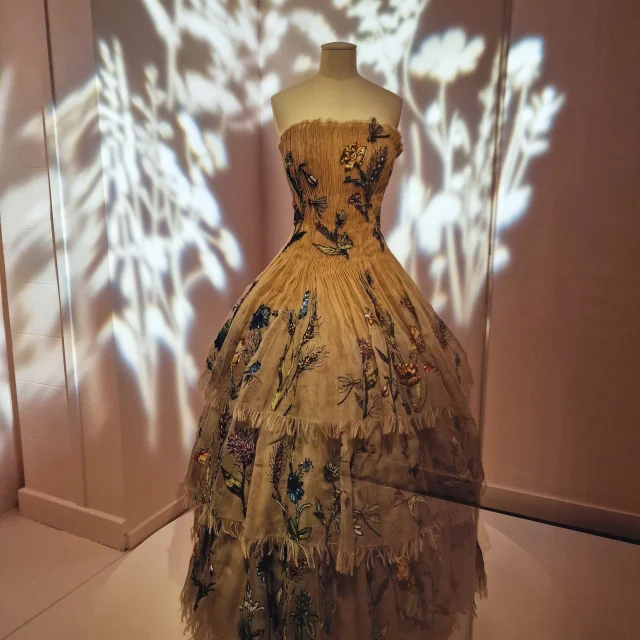 2025 04 Expo Dior Estelle Cohier 9
2025 04 Expo Dior Estelle Cohier 9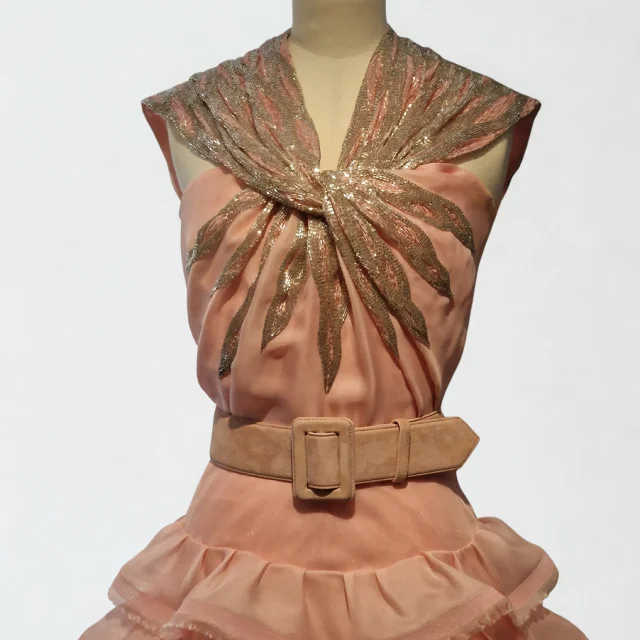 2025 04 Expo Dior Estelle Cohier 4
2025 04 Expo Dior Estelle Cohier 4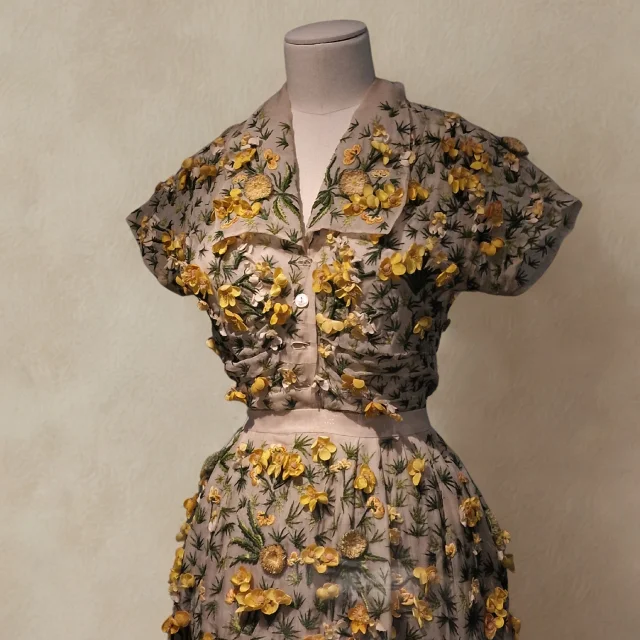 2025 04 Expo Dior Estelle Cohier 1
2025 04 Expo Dior Estelle Cohier 1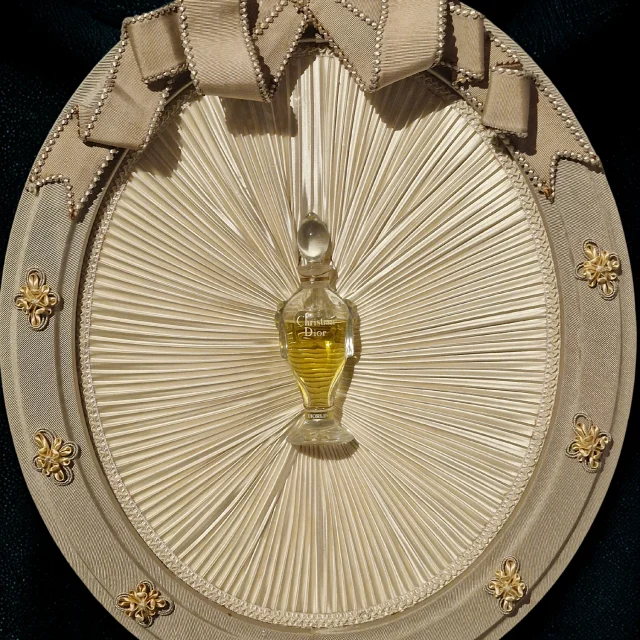 2025 04 Expo Dior Estelle Cohier 7
2025 04 Expo Dior Estelle Cohier 7Museum of Modern Art
Richard AnacreonBest wishes from Granville 3
From 5 April to 9 November 2025Bons baisers de Granville 3 is the final part of a three-year cycle during which the collections of the Musée d’art et d’histoire are honoured at the Musée d’art moderne Richard Anacréon. Each exhibition features a selection of representative works from among the museum’s 15,000 objects. In 1885, the year the Granville Museum was created, the writer Elisabeth Reclus published his description of the town, which he first described as the “Monaco of the North”. Beyond the clichés, the new edition of Bons baisers de Granville invites us to rediscover the emblematic images of Granville in the footsteps of the writer. Images of the Newfoundland pearls and the corsairs that dominated the town’s history until the early 20th century, the presence of the port in the town as depicted by painters or photographs from the Belle Epoque, when the beach became a place for strolling. These stylized images feed the collective imagination of Granvillais and travellers alike, and are used to illustrate tourist advertising and trinkets. If holidaymakers left Granville with souvenirs from the late 19th century, so did Granville sailors as they sailed the seas of the globe. Exotic objects, objets d’arts and shells were all on display in the curiosity cabinets of shipowners and rudits.
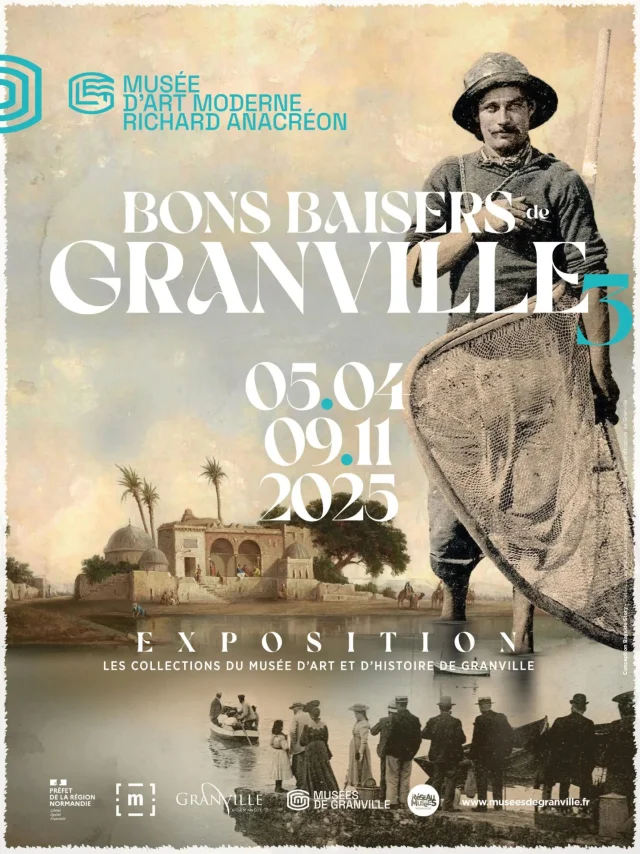 Bons Baisers De Granville 3 exhibition
Bons Baisers De Granville 3 exhibitionViewpoints
Benefiting from the boom in landscape painting, Normandy captivated painters during the 19th century. Picturesque and easy to reach from the artistic centres of London and Paris, it had many qualities that attracted landscape painters. When their tour of Normandy took them through Granville, the artists multiplied their representations. Annual submissions to the Salon des artistes français, the official heart of the artistic circus à Paris, testify to a continuous representation of Granville throughout the 19th century. Scenes of local life, representations of the cliffs, the Chausey islands, the port and its activities were among their favourite subjects.
Heading for Newfoundland
Sailors from Granville were among the first to embark on the adventure of the Grande Pêche off the coast of Newfoundland and the Gulf of St. Lawrence, now Canadian territory, where fish were plentiful. Until then a small coastal town, Granville was one of France’s leading fishing ports for cod, alongside Saint-Malo, Dunkirk and Fécamp from the 16th to the 20th century. From 1564, a charter mentions this activity as regular in the Normandy port. Each year, the Newfoundlanders set sail for the banks for a period of six to eight months, from late winter to autumn. Recruited from the coast and the hinterland, the crews are made up of around thirty men, known as terre-neuvas, from the captain to the cabin boy, including the salter and the cook.
On board
Somewhat removed from its prestigious Breton neighbour, Granville has been just as successful as Saint-Malo in making its port a naval stronghold, both in times of peace and war. From the 16th century onwards, the people of Granville have been arming mooring vessels for Newfoundland. A few large families such as the Couraye du Parc, Hugon, Lévesque and Leboucher families were particularly prominent. In times of war, they armed their ships for racing: with the authorisation of the King, the sailors set off to board enemy navies, whether civilian or military. Granville boasted the extraordinary careers of Beaubriand-Lévesque (1666-1706) and Pléville le Pelley (1726-1805), until the racing war gradually disappeared with the First Empire, between 1815 and 1820.
In the water
Since the end of the 18th century, following the English example, medicine has extolled the virtues of seaside bathing and the coastal climate. The French côtes were transformed to welcome city dwellers for spa treatments and then pleasure resorts. Even before the opening of the first wooden saloon for bathers in 1828, which was extended in 1858, Granville was a popular balneacute;aire resort. The arrival of the direct train from Paris in 1870 stimulated its development. The first beach cabins appeared, initially towed out to sea to prevent women from showing up in swimming costumes. Gradually, the cabins became fixed and the Plat Gousset promenade was improved from 1859 onwards. The beach became a shared space, regulated by the sea bathing policies dictated by local politicians, while the casino developed its entertainment to entertain the first tourists.
Travel Travel
Like many harbour towns, Granville has opened up to the world and increased its exchanges with other places. Pioneers, privateers, shipowners, soldiers or officers, the marins from Granville have sailed the seas of the globe and brought back memories as rich as they are varied;These were used to adorn the curiosity cabinets that were in vogue from the Renaissance to the 19th century (naturalized animals, shells, objets d’art, weapons, etc.). Each of the five continents is represented in the collections of the Musée d’art et d’histoire, among which it is not surprising to see a Kanak whalebreaker with a sperm whale tooth, an 18th-century Venetian spyglass or scarab beetles from the Congo. Marked by the orientalism in vogue in the 19th and early 20th centuries, local painters Maurice Orange, Pierre Brette, Henri Rudaux, Jacques Simon and others travelled to North Africa and depicted its inhabitants, landscapes and monuments in their paintings and drawings.
North Africa is a land of many cultures.
Chausey, in the spotlight
The Chausey archipelago, located 16km off the coast of Granville, is bathed in some of the highest tides in Europe. The tides have sculpted a unique landscape, giving rise to 52 high tides and 365 low tides;There are 365 high and low marshes, whose rocks and lots bear the poetic names of l’Eléphant, les Moines or la Chimère. The particularly rich fauna and flora of Chausey have been protected since 2004 by the Zone Natura 2000 classification. The archipelago has been occupied by man since prehistoric times: a cromlech and menhirs still bear witness to this. Chausey does not appear in texts until the 11th century, when Richard II, Duke of Normandy, gave the islands to the monks of Mount Saint-Michel. The history of the archipelago, a strategic location for the conquest of Normandy and Brittany, was shaped by conflicts between the French and English until the 19th century. Its official attachment in 1802 to the town of Granville put an end to territorial claims.


